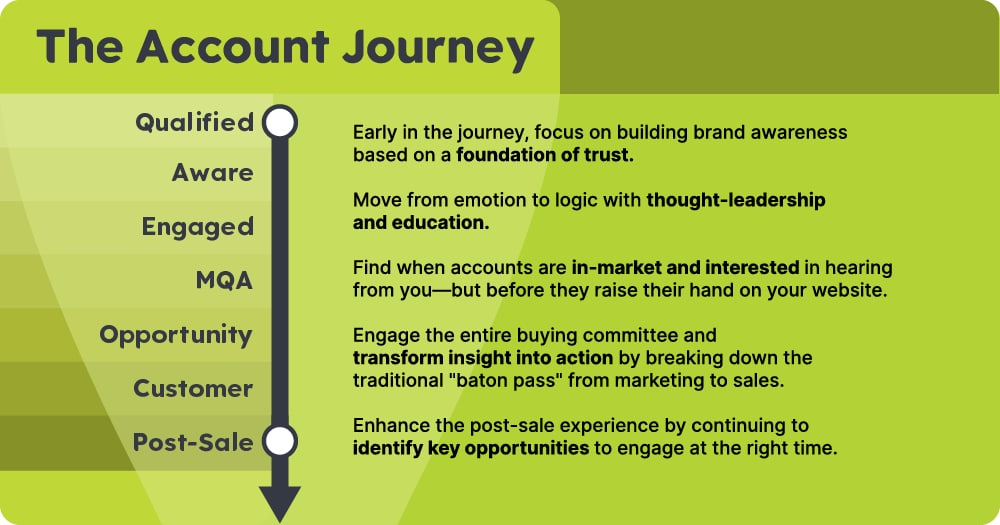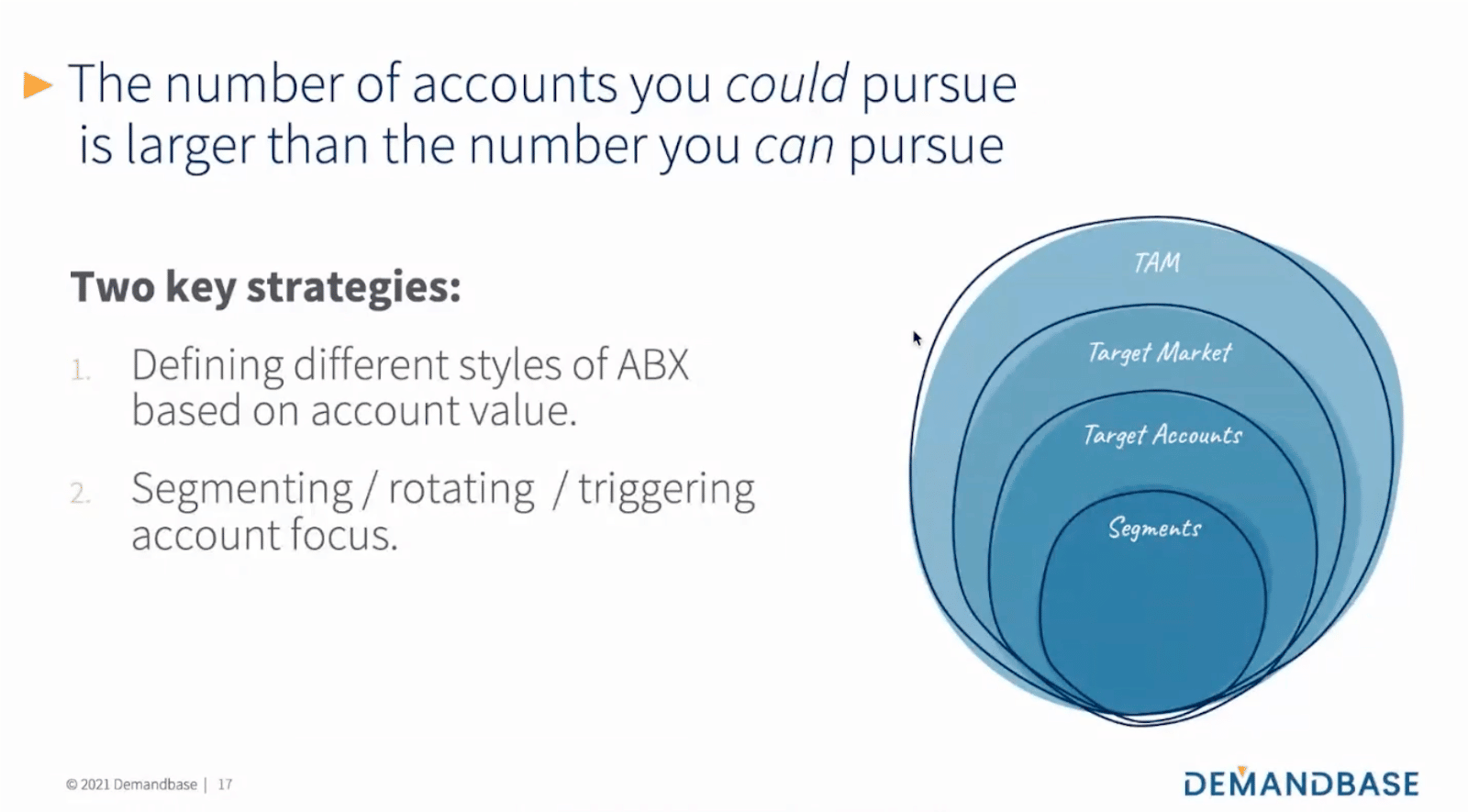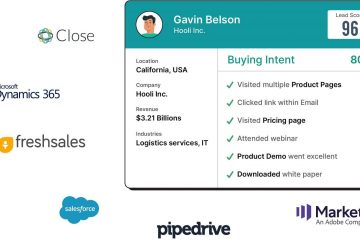What is Account-Based Experience (ABX)? How Does It Differ From ABM?
A major difference in B2C and B2B marketing today is in their core nature. B2C marketing has long transitioned to customer-centric and experience-oriented marketing. B2B marketing still remains sales-focused at its core even today, for many companies. This problem has been solved somewhat solved with Account-based Marketing where target accounts are handpicked and then nurtured and then sold to in a predictable and efficient manner.
ABM has its flaws, however. The approach companies take with ABM isn’t as personalized and the focus is not much on the experience. This is where Account-based Experience comes in. While ABX is not a replacement for ABM, it is a much-needed enhancement that leverages customer experience.
What is Account-based Experience?
Account-based Experience is a go-to-market strategy that combines customer-centric and customer experience-oriented demand generation with the precision and targeting of ABM.
Traditionally, different departments in a B2B business handle different phases of the customer journey.
With ABX, the marketing, sales, and customer success department work together. They ensure the customer has the best possible and the most cohesive customer experience throughout their customer journey.
This shifts the focus of B2B marketing from being oriented toward sales to being oriented toward customer experience. The customer-centric perspective allows the marketing operations to be even more effective and efficient compared to ABM.
However, the ABX approach does not completely render ABM useless. ABX is merely an enhancement that makes ABM more fruitful. We can rightfully say that it is an extension of ABM.
How does ABX connect to ABM?
When ABM first blew up in the B2B marketing space, a lot was promised. It is still one of the most effective B2B strategies that you could work with. But, extending it to ABX makes it so much better.
You can say that ABX was the missing component in ABM that unleashes its potential. With ABX, ABM can rightly deliver on target account selling in an efficient manner.

Source: Demandbase
ABX and ABM are essentially the same besides their approach. ABX is customer-centric and customer experience-driven. ABM on the other hand follows the traditional outbound sales approach.
If you’re already prioritizing customer experience with your ABM setup, then you’re technically practicing ABX. Thus, ABX is like a plugin for your ABM that catalyzes its performance output.
With this out of our way, we can check the components of the ABX model to gain clarity.
Components of the ABX Model
Considering the fact that ABX is an improvement to ABM, a few core components will remain the same. However, there are significant changes in them which we will go through here.
Marketing, Sales, and Customer Success Alignment
The idea with ABX is to prioritize customer relationships over the value of accounts. Promises of ABM can be met with ABX only by ensuring strong customer relationships.

Source: Demandbase
A customer journey spans three departments – marketing, sales, and customer success. To ensure the customer journey is positive and builds a lasting relationship with the customers, the three said teams need to work in unison.
Having these three functions aligned will ensure the delivery of a customer-centric and consistently positive customer experience.
Prioritizing the Right Accounts
Similar to what you do with ABM, with ABX you’re building customer relationships and are not merely converting leads.

Source: Demandbase
Building strong customer relationships requires time and resources. Thus, you cannot target each and every account you identify. The targeting needs to be prioritized based on the suitability and value of the said account.
More time and resources should be allocated to building relationships with accounts that hold more value. This will maximize your chances of conversion, retention, and customer lifetime value.
Leveraging the Right Tools, Technology, and Data
Similar to ABM, effective implementation of ABX requires the use of the right tools, technology, and data. In order to enhance customer experience and build strong and lasting customer relationships, a lot of insights are needed.
Moreover, personalization and content delivery are driven by behavioral insights about the target accounts. With Salespanel, for example, you can use behavioral data to personalize the experience of your accounts. (Shameless plug!)
Using the right tools, technology, and data make an effective ABX strategy. These enable you to generate insights that lead to accurate personalization and the most effective engagement and content delivery.
Personalization
With ABM, the personalization was limited to the content being delivered to the key decision-makers of an account. With ABX, the personalization extends to the overall customer experience at all stages.
Personalization has many benefits. While offering personalization with content is impactful, extending it to the customer experience is necessary for ABX. Building customer relationships requires a bit of personal touch. With ABX, personalization needs to be done as different decision makers engage with the buying journey.
Moreover, this personalized customer experience has to be ensured right from the marketing stage to the customer success stage.
Utilizing the Right Channels
The delivery of content and a positive customer experience is as important as its personalization. Choosing the right channels, thus, becomes necessary.
While choosing the channels, one must ensure a few things. First, make use of as many channels as effectively possible. This maximizes the content and experience delivery.
Second, the message delivery needs to be consistent across the different channels to maximize customer experience. For this, you can opt for an omnichannel marketing strategy where you engage with them on different platforms.
Third, watch out for the frequency of posts. The trick is to find the right balance. You have to ensure your content delivery is consistent but not as frequent enough to completely overwhelm the audience.
Relevant Engagements and Personalized Interactions
Reaching out and engaging with your audience is an important part of building relationships. The only thing you need to ensure that you engage in the right manner.
You can say that building a relationship depends on exchanging value. Here, the value can be in the form of some relevant content, case study, business ideas, etc.

Source: ITSMA
You can use intent data to understand where an account is in the buyer journey. Based on that information, you can engage with them by providing them with information relevant to their line of work and where they are in the buyer journey.
In exchange for providing value, you will be able to initiate relationship building with the account. Thus, relevant engagements and personalized information can be helpful.
Personalized Marketing with ABX
As we all know, personalized marketing is very effective and the B2C industries have been making the most of it. Offering a personalized marketing experience on par with B2C in the B2B sector wasn’t possible until now.
In B2B, personalization needs to be offered throughout the journey while leveraging data points that are available to you. We mentioned earlier how one such tool, Salespanel, can help. Let’s have a look at what’s possible:
Personalize Experience with Dynamic Content
Utilizing powerful tools such as Salespanel, you can identify visitors and accounts in real-time. This allows you to provide them with dynamic content that’s been personalized for the particular account and further tailored for the particular individual.
Qualify and Prioritize Visitors in Real-time
As mentioned earlier, prioritizing accounts is necessary when it comes to ABX. Leveraging AI, ML, and data intelligence, Salespanel enables you to score visitors in real-time. When tied with an account and score, it is easier to prioritize accounts.
Enrich the Experience of Target Accounts
ABM was already quite effective and ABX only improved upon it. With Salespanel’s behavioral analysis, you will be able to enrich a target account’s experience even further.
You’ll be able to prompt them for certain actions or provide additional content triggered by behavioral cues.
Dynamic Retargeting
Personalized Marketing should not be limited to your website itself. Using Salespanel, you can engage with your target accounts with personalized marketing even when they are away from your website.
You can target them with content relevant to where they are in the buyer journey. With this, you can warm up the leads that weren’t ready for the sales team.
Personalization Driven by First-party Intent Data
First-party intent data can reveal a lot about the intentions of an account. Moreover, as it is a part of behavioral analytics, it can be used to generate actionable insights. One application of these insights is to deliver more accurate and effective personalization.
Easy Integration with Many Tools and Platforms
Salespanel can easily plug into your tech stack. It enjoys integrations with Salesforce, Pipedrive, Hubspot, and many more. You can also plug Salespanel with platforms such as Facebook, Mailchimp, ActiveCampaign, and LinkedIn to deliver personalized content everywhere.
Final Thoughts
Account-based marketing is great but Account-based Experience is an upgrade that further enhances its effectiveness. Leveraging personalized marketing and creating meaningful customer relationships by aligning sales, marketing, and customer success is a winning combination. With the right tools and strategies, you can get started with ABX in no time.
Sell more, understand your customers’ journey for free!
Sales and Marketing teams spend millions of dollars to bring visitors to your website. But do you track your customer’s journey? Do you know who buys and why?
Around 8% of your website traffic will sign up on your lead forms. What happens to the other 92% of your traffic? Can you identify your visiting accounts? Can you engage and retarget your qualified visitors even if they are not identified?



